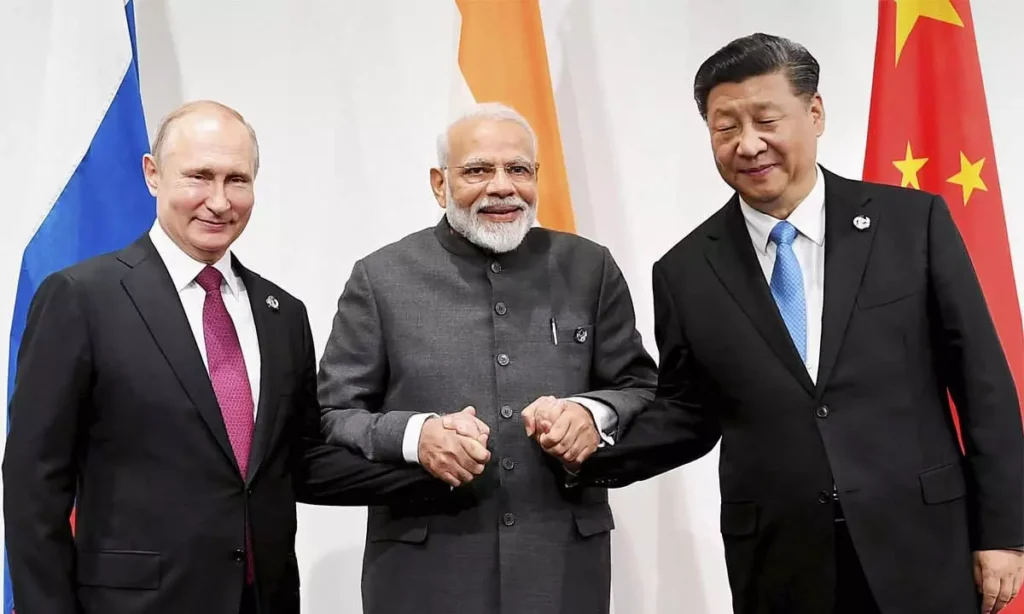
In the ever-evolving world of global geopolitics, economics, and trade, few issues generate as much debate as tariffs. Former U.S. President Donald Trump’s tariff plan primarily aimed at protecting American industries and reducing trade deficits has long been a source of friction between Washington and other global powers. While tariffs are often discussed in the context of U.S.-China trade tensions, their ripple effects extend far beyond bilateral disputes. Today, leaders like Indian Prime Minister Narendra Modi Chinese President Xi Jinping, and Russian President Vladimir Putin find themselves navigating Trump’s tariff-driven agenda, not just individually, but increasingly as a collective force.
Trump’s Tariff Vision: America First, World Second
Trump’s “America First” policy placed tariffs at the center of his economic strategy. Steel, aluminum, electronics, and even agricultural products became entangled in layers of duties and restrictions. The logic was simple: tariffs would shield American workers and industries from unfair competition, particularly from China. However, the unintended consequence was the creation of new alliances among U.S. rivals and even partners, who suddenly found common ground in resisting Washington’s economic aggression.
Modi’s Calculus: Balancing Growth and Global Influence
For India, Trump’s tariffs were a double-edged sword. On one hand, they created opportunities for Indian exporters to fill the gaps left by restricted Chinese imports in the U.S. market. On the other, they hit sectors like steel and textiles, which depend heavily on exports. Prime Minister Modi’s approach has been to balance pragmatism with long-term strategy.
India’s booming economy requires stable trade relations, and tariffs disrupt this balance. By positioning India as both a partner to the West and a bridge to the Global South, Modi has ensured that New Delhi maintains flexibility. However, when facing Trump-style protectionism, India leans toward forging stronger partnerships with nations like Russia and China, both of whom share an interest in reducing their vulnerability to American economic pressure.
Xi’s Perspective: Turning a Challenge into an Opportunity
President Xi Jinping bore the brunt of Trump’s tariff crusade. The U.S.-China trade war, launched in 2018, triggered tit-for-tat tariffs worth hundreds of billions of dollars. While these measures disrupted Chinese exports and supply chains, they also forced Beijing to accelerate economic diversification.
For Xi, the tariffs were not only an economic challenge but also a political one. They symbolized Washington’s broader attempt to curtail China’s rise as a global power. In response, Xi pursued the Belt and Road Initiative (BRI) more aggressively and deepened ties with Russia, India, and other Asian economies. Aligning with Modi and Putin offers Xi a chance to present an alternative world order one where trade is multipolar and not dictated by Washington’s whims.
Putin’s Strategy: Sanctions and Synergies
Unlike China and India, Russia’s direct exposure to Trump’s tariffs was limited. However, Moscow has faced a broader set of economic restrictions in the form of sanctions particularly after events in Crimea and later, Ukraine. For President Vladimir Putin, tariffs and sanctions represent two sides of the same coin: Western economic coercion.
Rather than retreat, Putin has turned sanctions into a rallying cry for economic self-sufficiency. Strengthening ties with Beijing and New Delhi is central to his plan. By integrating Russia’s energy resources with Chinese manufacturing and Indian markets, Putin envisions a strategic triangle that reduces reliance on the West.
The Emergence of a Strategic Triangle
When Modi, Xi, and Putin come together, it is not merely about resisting Trump’s tariff plan it is about reimagining the global economic architecture. Their cooperation could take several forms:
- Energy Security – Russia supplies oil and gas, China provides infrastructure financing, and India guarantees a vast consumer base. Together, they can reduce Western leverage over global energy markets.
- Technology and Innovation – Joint initiatives in 5G, AI, and defense technologies allow them to create alternatives to Western-dominated ecosystems.
- Trade Routes – Projects like the International North-South Transport Corridor (INSTC) and China’s BRI could link Asia, Europe, and Africa, bypassing traditional Western-controlled trade hubs.
- Political Leverage – A united front at institutions like the BRICS, G20, and the United Nations strengthens their bargaining power against U.S. trade restrictions.
Challenges Ahead
Of course, unity among Modi, Xi, and Putin is easier said than done. India and China share a long-standing border dispute, while India’s defense partnerships with the U.S. complicate full alignment with Moscow and Beijing. Similarly, Russia’s dependence on China may tilt the balance of power within this triangle. Still, Trump’s tariffs serve as a unifying factor—reminding all three leaders of the vulnerabilities that come from relying too heavily on U.S.-controlled trade structures.
Trump’s tariff plan, designed to strengthen American industries, has ironically accelerated the formation of counterbalances abroad. Modi, Xi and Putin despite their differences, recognize that their nations share a common interest in reducing U.S. economic dominance. Whether through trade, energy, or geopolitical cooperation, this emerging bloc is not just reacting to Trump’s tariffs it is reinventing the rules of global trade.
In a world increasingly defined by competition, this strategic triangle could become one of the most significant developments in 21st-century geopolitics, shaping not only how tariffs are imposed but also how power itself is distributed.
